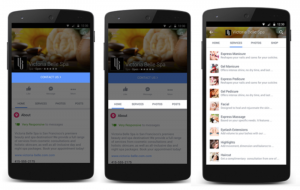— June 28, 2019
We humans are social creatures who have a compulsion to connect with other humans. Paradoxically, that same need deeply divides us from others as we choose to identify with those in our own tribes. Our tendency toward tribalism is increasingly creating a society segregated by ideological enclaves.
From our social organizations, to our places of worship, to the media outlets we gravitate toward, we surround ourselves with like-minded people and similar points of view. This segregation fosters unhealthy mindsets against those with political, religious, and cultural differences, creating an “us and them” mentality.
Our places of employment are often the most diverse settings in our lives. Relationships with coworkers tend to cut across race, gender, religion, sexual orientation, and political persuasion. Because of this, workplace environments have the potential to make us better at working across differences.
Yet, as businesses often represent a microcosm of society, many companies find it difficult to avoid the animosity that society’s divisiveness creates. Studies show that workplace tension causes both generalized stress and an increased reticence around talking about controversial issues, even when they impact the work.
Left unaddressed, the increasing tribalism that’s segregating our society—to the point that we demonize those we disagree with—can spill into and undermine work environments. Such fanaticism is contrary to successfully meeting company goals and objectives. For this reason, companies need to take up the important work of addressing issues of diversity, culture, and finding common ground.
Several companies are developing successful strategies for orienting employees to work across differences. For example, Target sponsors “Courageous Conversations” workshops to engage employees of all backgrounds to talk about divisive issues—such as travel bans on predominantly Muslims countries.
Kaiser Permanente’s efforts to promote common ground and organizational belonging involve a practice in which executives are coached to act as team leaders instead of bosses. Every team is tasked with making improvements toward the organization’s stated values and then sharing its best practices. Former CEO George Halvorson explained, “When our organization fosters a culture of ‘us,’ we look out for each other in a different way. It can override our individual and societal belief systems.”
To build a sense of equity and belonging in your organization, start with these strategies:
1. Set Your Vision Clearly.
When you’re able to clarify and articulate your vision for what the company stands for and is trying to accomplish, you’re more likely to engage employees. Having a powerful and positive organizational narrative around belonging and the value of diversity, and frequently communicating and reinforcing that narrative, produces a story that employees can repeat, reflect on, and internalize. It allows employees to see themselves as part of a team and helps to override polarities from individual viewpoints.
2. Train in Interpersonal Skills.
Just as organizations provide skills training, they also need to provide training in interpersonal relations that promote heightened communication and inclusion, and recognize and address unconscious bias. Companies need to acknowledge and honor the benefits of diverse perspectives in decision-making, creativity, and problem-solving.
3. Offer Facilitated Dialogue Across Groups.
It’s incredibly valuable to engage with different points of view, but it’s essential that this happens as dialogue rather than debate. Create a safe space for the conversations, set ground rules, and ask everyone to override their individual biases.
Learning to listen actively to points of view you may not agree with, while resisting the tendency to convince others or win the argument, can translate to better employee-to-employee relations as well as employee-to-customer relations.
4. Develop Systems and Structures to Promote Inclusivity.
Work to remove bias in areas such as recruitment, hiring, onboarding, and performance reviews. While some companies are using “blind résumés” that remove personally identifiable information, this makes it more difficult to spot potentially valuable employees with compelling stories. Know that diversity entails more than “how many we have of X category,” but involves deep levels of engagement.
5. Invite the Sharing of Personal Stories.
Sharing stories is a way to learn not only about each other personally, but also about other worldviews. Telling one’s personal story is a way of belonging—of being heard and seen. Invite employees to share their personal stories in meetings, in employee resource groups, in diversity education or wherever it fits into the employee experience.
6. Honor Every Individual’s Contribution.
Find ways to let every employee understand how his or her role serves the greater good. Does the receptionist understand how a pleasant demeanor can affect the mood of what follows? Are the bookkeepers who never see the customers acknowledged for their contribution to the customer experience? Honoring everyone’s contribution helps make people feel that they’re a part of the team.
Workplaces are our best hope for bridging the divide between our different “tribes.” Establishing connections within our working lives opens doors to greater understanding and cooperation. When we engage with people from separate tribes, we gain new insights and we also validate the humanity of people regardless of differences.
**Originally published at HRDailyAdvisor
Business & Finance Articles on Business 2 Community
(75)
Report Post






